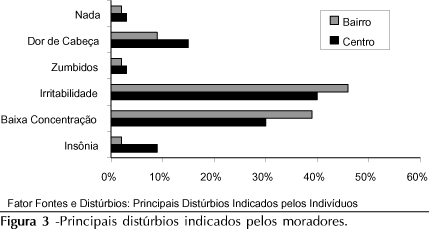OBJECTIVE: To comparatively analyze the perception of daily urban noise between residents of an acoustically and a non-acoustically controlled area. METHODS: Two urban areas were selected through objective assessments of equivalent sound levels and defined as a non-acoustically and an acoustically controlled area. A random sample of each area was selected and a questionnaire was applied to its residents. Statistical indicators of urban noise perception were generated through factorial multivariate analysis. RESULTS: The average sound level (Leq) found in the downtown district (a non-acoustically controlled area) was 72.9 dB(A) and in the acoustically controlled area was 53.3 dB(A). Three statistical indicators were generated through factorial multivariate analysis: temporary perception, perception of atypical noises and sources and disturbances. CONCLUSIONS: Residents of the acoustically controlled area reported increased noise level. The sound level in the downtown district has remained practically constant and much above the standards established by local law. The generated indicators are useful parameters to characterize the perception to continuous noise exposure in the population.
Noise; Noise effects; Noise measurement; Urban areas; Noise pollution





